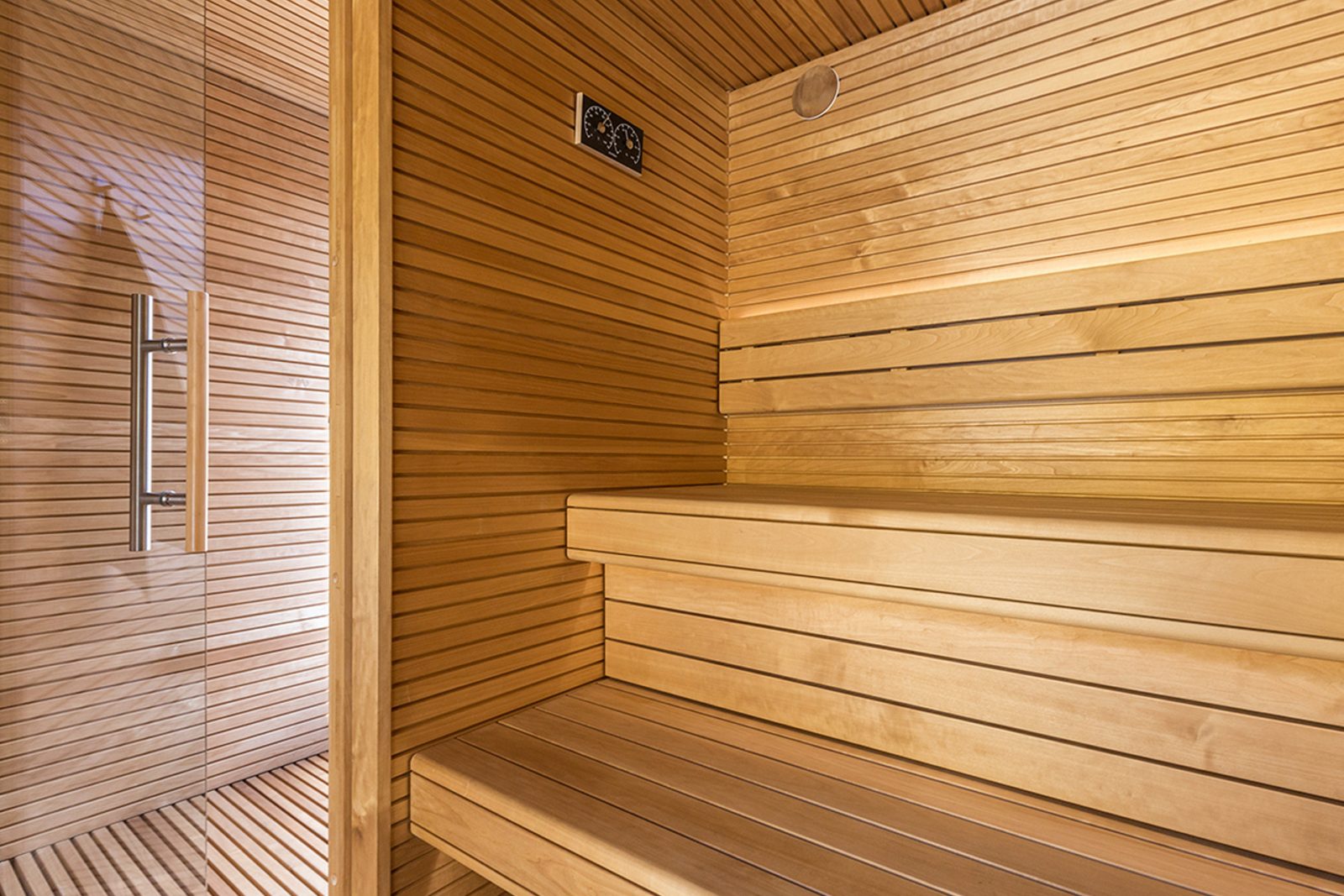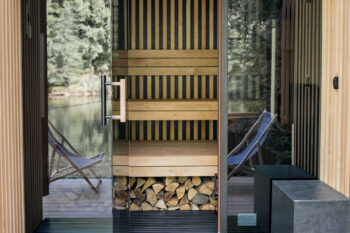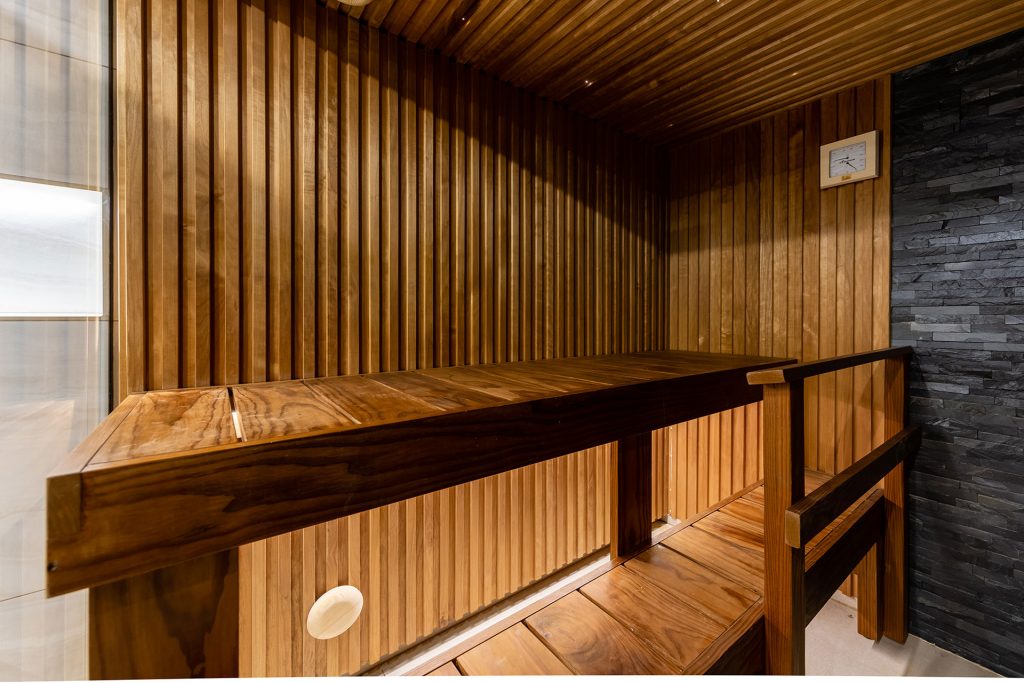Whether you’re a sauna newbie or a seasoned afficionado, you might have wondered what the optimum temperature is for a good steam. As you’ll see though, when considering the question of how hot your sauna should be, there is no simple answer as there are multiple factors involved including personal preference, what you want to get out of the experience, your current state of health and the features of the sauna itself. Let’s take a deeper dive and explore the relevant considerations, so that you can make sure you get the right sauna temperature in any circumstances.

When it comes down to it, your best indicator of the ideal sauna temperature is your own body, so pay attention to how you feel while in there and do something about it if you feel either too hot or too cool – it’s supposed to be an enjoyable experience after all! Your preferred temperature might alter from moment to moment depending on factors like ambient temperature, what you’ve been doing that day, how much you’ve eaten and how recently. It’s also important to factor in everybody’s needs if you’re using the sauna as a group – children require lower temperatures for example, and no one should be allowed to feel uncomfortably hot.
Remember that the temperature in a sauna varies depending on how high up you are, so if you find yourself overheating on the upper bench, try the lower level first rather than leaving the space entirely. If you’re still too hot at that point you might need to take a breather, but it’s not unreasonable to expect the temperature to be set within a range that everyone can enjoy. If you’re in the sauna with a group of experienced users you may find that they can handle much higher temperatures than you can – this is because of hormesis, a process by which our bodies build a tolerance for certain conditions through gradually increasing levels of exposure over time.
The feature of a sauna that has the biggest effect on how hot it feels is the heating mechanism. With the exception of infrared saunas and steam rooms – which one could argue are not saunas in the truest sense – saunas work by heating up the stones on top of the stove and the air inside, either with fire or an electric heating element, until it’s ready to use. After this, the heat can be kept at the preferred level by regularly throwing water on the stones, which also produces that much-loved steamy sensation. Interestingly, this actually decreases the temperature within the sauna, even though it feels much hotter due to the rise in humidity.
Aside from the fact that there are lots of different options available, with infrared saunas, steam rooms, smoke saunas, and standard saunas with either electric or wood-burning stoves, even saunas that operate similarly to each other can feel quite different. A sauna’s size, shape, materials and air flow will all affect how quickly it heats up and cools down, which points feel warmest and coolest and how comfortable it is to stay inside at hotter temperatures, so you may find that your preferred temperature looks different on the thermometer depending which sauna you’re using, even if it feels the same to you.
Infrared and electric saunas can be easily set to your desired temperature and changed at any time, whereas the control is less precise with a traditional wood-burning sauna. And if you’re fortunate enough to have experienced a smoke sauna, you’ll know that once the chamber has been heated up it will stay hot until the stones have cooled, with no option to reheat as there is no flue for the smoke to escape. Because they all work in very different ways, the various sauna types have their own optimal temperature ranges. Typical temperatures for different saunas are as follows:
There is a large variance between the humidity levels too; steam rooms should be kept around 100% humidity, whereas a traditional sauna will normally have a humidity of level 5-15%, rising temporarily during steaming.

For centuries, the sauna has been a place to relax and unwind, both physically and mentally. By choosing modern, trendy materials to build your sauna, you will be giving yourself a unique space that is not only enjoyable to be in, but also nice to look at.
There’s plenty to love about the humble sauna, with a range of positive effects such as stress relief, relaxation and physical health benefits like:
Whether it’s about chilling out after a long workday, spending quality time with loved ones, warming up from the cold, adding a touch of luxury to your bathing experience or any of the many, many other great reasons to enjoy a sauna, the temperature you choose is likely to vary depending on what you’re aiming to achieve and who you’re with.
One important factor to consider is how long you’ll spend in there. If you want a quick “blast” you might find yourself going for a higher temperature, but staying in a hot environment for too long can have a negative impact on your health, so it’s important to be careful – remember that you can leave and re-enter the sauna as often as you like. Potential health risks of saunas include:
While it might be fun to see how much heat you can handle or have a contest with your friends to find out who lasts the longest in a hot sauna, always put safety first. People can pass out in saunas, and if you’ve had a drink or two then not only will your tolerance be lower but you’ll also be less sensitive to the warning signs from your body telling you to seek cooler environs. This is not something to be taken lightly – the annual world sauna championships held in Finland were canceled after the 12th edition in 2010, when Russian competitor Vladimir Ladyzhenskiy died after enduring a temperature of 110 °C for six minutes.

Additionally, although moving quickly from the heat of the sauna to an icy temperature, for example an ice bath or a frozen lake, has been said to have health benefits for skin pores, blood vessels, lungs and muscles, it can be dangerous even for healthy people due to the risk of circulatory stress. The bottom line is that if you’re uncomfortable in the sauna then you’re definitely doing something wrong, so don’t overdo it – even if everyone else seems fine! If you consistently find that you’re having issues and you want your sauna experiences to be more enjoyable, trying out different temperatures and seeing how you feel is a good place to start.
When it comes to the best sauna temperature, there’s really no right answer as the level that’s right for you at any given time can vary heavily depending on the kind of sauna you’re using, the purpose of your session and the state of your mind and body on the day. However, the sauna temperature guidelines in this article should prove helpful when considering which heat level to use for your next steam. Just remember to be careful, and don’t feel under pressure to stay in the sauna if you’re not feeling completely comfortable!